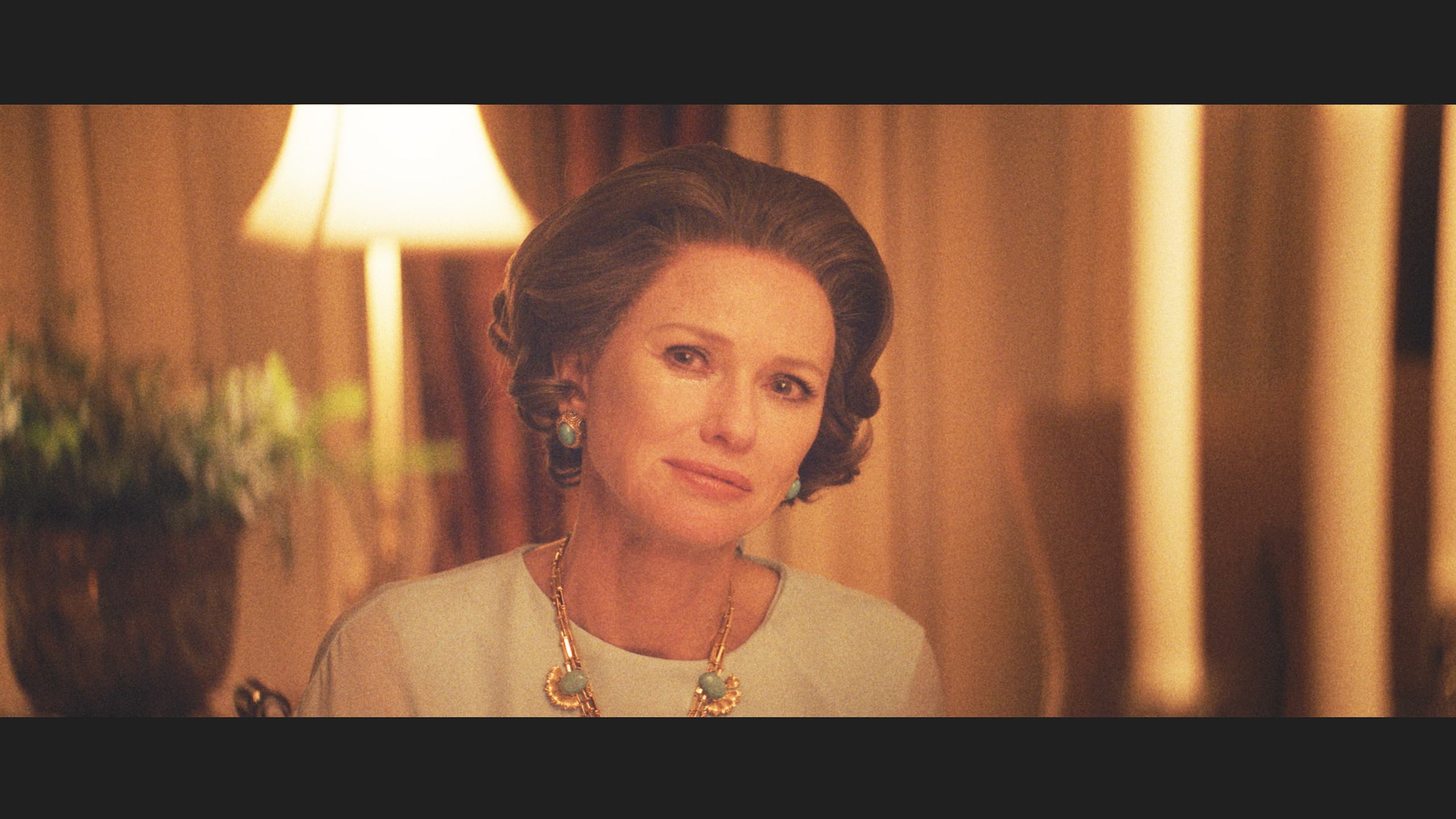The True Story of Babe Paley's Children: A Feud | Vanity Fair

Article by Chris Murphy
The enchanting yet unfortunate Babe Paley takes her last breath in the penultimate episode of Feud: Capote vs. the Swans, enacted by Naomi Watts. On the day following her 63rd birthday, Babe succumbs to lung cancer complications, departing in her sleep at her Long Island home with dreams of Truman Capote (played by Tom Hollander). Her husband Bill Paley (Treat Williams) and four of their children remain present, while a rift with one of her daughters continues even at her deathbed. According to layers of the series, Babe's relationship with her children was more complex than her seemingly perfect exterior would have people believe.
The episode opens with a fiery quarrel between Babe and Bill following Babe's disclosure about her limited remaining lifespan. Bill accuses Babe of prioritizing her appearance and public image over her own daughter. Babe retorts bitterly, criticizing Bill's disdainful demeanor towards their son. The argument concludes with Bill's promise to urge their estranged daughter Kate to return and see Babe before her passing.
Babe's condition worsens throughout the episode, and in her final moments, she reunites with Capote in a dream sequence encompassing visuals of swans swimming in bath tubs, fireworks, and a gossamer pink gown. Babe, in her prime, dreams of Capote as the real-life, terminally ill Babe lies in her bed while her family watches. An ailing but hopeful Babe assures Capote she is not too late to mend past mistakes. Subsequently, their fourth daughter (potentially Kate) enters the room and holds Babe’s hand, reassuring her that it's never too late.
The real-life counterparts, Babe and Bill Paley were parents to six children. Each of them had two children from their prior marriages: Jeffery and Hilary from Bill's and Stanley and Amanda from Babe's. They later had two more children of their own, Kate and Billie. Despite superficial similarities to the affluent Brady Bunch, the Paleys' blended family was more discordant. A 1990 Vanity Fair article on Babe attributes her obsession with perfection and glamour as a factor in her struggle with motherhood. This led to an overflow of Christmas presents aimed at alleviating her guilt.
Jeffrey and Hilary spent most of their time with their mother, Dorothy Hearst, from Bill’s first marriage, only intermittently visiting their father. The remaining four resided with Babe and Bill in Long Island, where they were deliberately distanced from their parents. Their separation even extended to living arrangements, with the children housed in a separate cottage on the property.
This estrangement was keenly felt by the children. Their parents were notable players in the New York social scene and were often absent from their lives, which led to a scramble for their attention when they were present. This unsupportive environment resulted in the division among the children, each looking out for their own welfare.
Jeffrey, was a diligent student and a successful basketball player who rarely enjoyed his father’s attention. His brief tenure at his father’s firm WCBS was negatively met by Bill and subsequently ended. However, his sister Hilary had a healthier relationship with their father and even idolized her step-mother by pursuing a career at Vogue like Babe.
Bill and Babe's natural offspring, took various methods to rebel against their family. The story of Kate is one of overcoming adversity - Smith refers to her as the most damaged of all birds due to her diagnosis of alopecia at a young age, a difficult reality for her perfectionist mother Babe to accept. Smith writes how Kate had to endure regular applications of bear grease to her scalp in the sun. Babe would purchase wigs to hide her daughter's alopecia. Kate later attended Rhode Island School of Design but did not graduate, and moved into the bohemian arts scene in downtown, maintaining little to no contact with her parents for nearly seven years. Smith cites a family friend, Leonora Hornblow, who recounted how Kate disappeared and consistently spoke ill of her parents. Besides being an artist, Kate grew to accept her alopecia and started painting self-portraits showcasing her condition.
Her sibling Billie was considered the chief outsider in the family. He was described as ‘a strange child’ and forbidden by both parents, who witnessed him see a psychiatrist at 10, get expelled from schools, begin marijuana in his teens and mostly remain friendless. He and his father never truly got along. Billie once told The Washington Post, “I was too peculiar for them. I just left. I loved my parents, but I also detested them.”
Billie, upon maturity, took up a plethora of peculiar jobs including dolphin trainer, construction worker, yacht broker, sales rep, and a photographer, besides being sponsored by two trust funds. Besides serving in Vietnam as a “combat cinematographer”, he also had an addiction to heroin which he reportedly overcame before becoming a drug intervention counselor.
Babe's firstborn son, Stanley, also known as Tony, was nothing like a black sheep. “He was Babe’s favorite," Smith writes. Tony went to Harvard and later acquired his J.D. from the University of Virginia and an M.B.A. from Columbia. He was viewed by his father as a rival, due to his role as Babe's favorite, leading to arguments between the two.
Amanda, their other daughter, was likely the most similar to Babe, which might have been a cause of contention. “Babe was concerned about Amanda,” a family friend confides in Smith. “She was stunning.” Amanda studied at Wellesley, where she met her future husband, Harvard student Carter Burden. They became engaged in her sophomore year, which led her to drop out of college.
The Burdens soon became significant parts of New York's social scene, similar to the Paleys. At one point, fashion icon Halston even labeled Amanda “the most attractive girl around."
However, Amanda's success might have led to some resentment from Babe. “Her mother was extremely competitive with Amanda,” a confidant of the Paley family discloses to Smith. A 1965 Vogue article featuring the newly wedded Burdens slightly exaggerated Amanda’s relationship with her mother. Nevertheless, in 2003, Burden was a formidable urban planner chosen by New York mayor Michael Bloomberg to head city projects. In the absence of a bond with her mother, Burden found a connection with Bill. "I was extremely close to him," she said in an interview. "I was actually building things myself with his lessons."
Elsewhere in the article, a friend of Burdens is quoted saying that Babe “was an unhappy person. There was an enormous amount of competitiveness with Amanda, which she took out on her by making her feel unattractive. She’s had to create her own self-esteem.”
Though Amanda Burden had complicated feelings about her mother, her daughter, Belle Burden, seems to have nothing but love for her grandmother. Belle said as much in a recent essay she wrote for The New York Times headlined, “The Babe Paley in Feud is Not the Woman I Knew.”
Belle accuses Feud of mischaracterizing her grandmother while neglecting to consult her family during production of the series. “I can accept that details are changed when real people are fictionalized,” she writes. “I know it is hard to capture the ineffable magic of someone’s presence. There are no live recordings of Babe, no way for an actress to know how she moved and spoke. What I cannot accept is the theft of my grandmother’s narrative.”
She paints a portrait of Babe that stands in stark contrast to Amanda’s, as a warm, supportive caregiver who loved to make her grandchildren laugh. “My grandmother was wounded by Capote taking the things she told him, changing them, betraying her confidence and her privacy, which she guarded fiercely,” Belle continues. “Now her life has been stolen and twisted again, posthumously, by the creators of Feud.” Belle ends her essay with the following note: “What I wish more than anything is that my grandmother had lived long enough, and been bold enough, to tell her own story, claiming it before anyone had the chance to steal it from her.”
At the very least, Feud attempts to paint a picture of Babe’s final moments that evoke how they actually happened—at least according to Smith’s account. Per Smith, the children gathered on July 5, Babe’s 63rd birthday, to say goodbye to their ailing mother. As the show suggests, Kate was the last to arrive.
“She hovered close enough to death for her family to summon Kate, who had agreed to come only at the final moment,” writes Smith. “Babe was semiconscious, but she talked a bit, and she recognized her long-estranged daughter.” But it was Amanda—the daughter most like Babe— who held Babe’s hand in her final moments on July 6. “Paley and the children sat on her bed, paralyzed with sadness,” writes Smith. “Their vigil lasted until early the next morning, when she died with Amanda holding her hand.”




